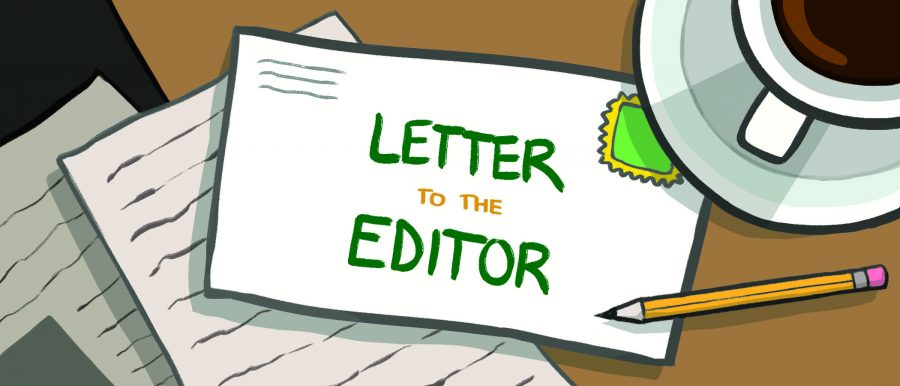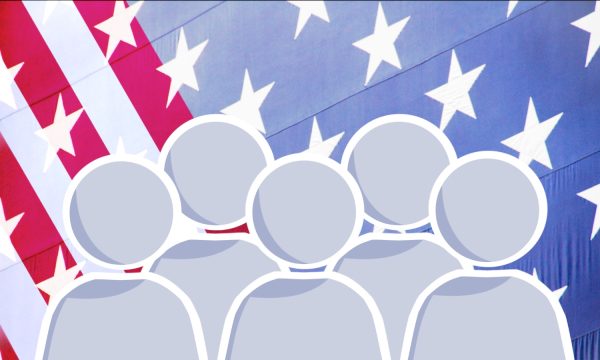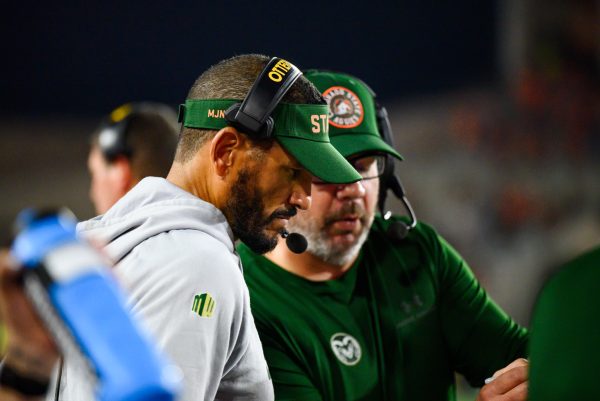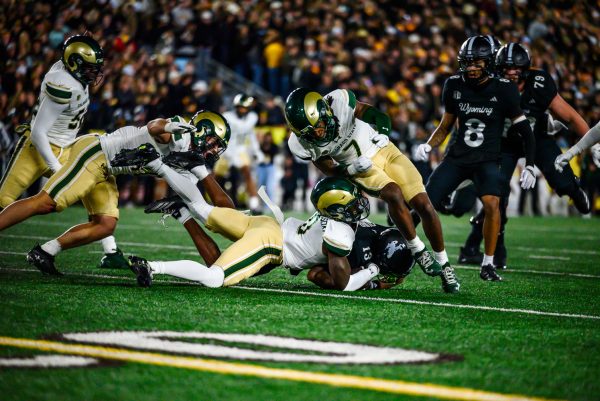LTTE: Higher ed’s anti-Blackness, in real time
July 6, 2022
Editor’s Note: All opinion section content reflects the views of the individual author only and does not represent a stance taken by The Collegian or its editorial board. Letters to the Editor reflect the view of a member of the campus community and are submitted to the publication for approval.
This article by Dr. Sydney Freeman Jr. summarizes the reason why my previous role at Colorado State University will likely be the last time I work on anyone’s college campus. I watched that position for years, joyfully accepted and moved across the country for it. A dream come true at the time.
I was on the most intentionally inclusive team I’ve ever experienced, with people I consider friends to this very moment. But the intentions of a few clearly did not reflect the institution as a whole, especially its leadership.
For the better part of my year there, most of my time, energy and mental capacity were spent dealing with anti-Black racism, both professionally and personally. Here’s what that looked like in real-time:
August 2019
I started the position.
Early September 2019
Students go viral for doing blackface with a “Wakanda forevaa” caption and the highlight of the President Joyce McConnell’s official statement was essentially “due to the first amendment, there’s nothing we can do.”
Late September 2019
Someone writes “ni**er” (in what was believed to be blood and without asterisks) on the wall of a public outdoor bathroom. A bathroom I could see from my desk because it was managed by my department. A marking that could have easily been discovered by anyone, including one of our Black student employees at the time.
As the department’s marketing and communications lead, silence wasn’t an option, so my supervisor and I wrote a statement using a framework from Dr. Rickey Frierson (a friend and Black DEI director).
Within days of this statement’s publishing, it came down the chain of command that all department statements had to be reviewed by the respective vice president’s office and possibly the president’s office. I wonder if that decision was made because we named oppression and racism or stated a firm stance against both. I can’t find any of the full articles about the incident anymore so I guess this one-sentence blurb will have to do.
October 2019
CSU has an annual week of events and presentations called The Symposium for Inclusive Excellence (Diversity Symposium, at the time). During a breakout presentation, the speaker (a staff member) was verbally and visibly flustered from the start. Why? Because an old white man (campus role unknown, but gave me faculty vibes) showed up to argue that Black people “just have low IQs,” citing standardized test research — yes, you read the event date correctly.
That conversation spilled over into disrupting the presentation and demanding the attention of all attendees to make that racist, outdated and false claim. Right on time, he was corrected by the reliable Dr. Rickey Frierson as students (including multiple Black folx) watched in horror/disbelief and I focused on containing my rage. I don’t know if anyone ever submitted a bias incident report, but I didn’t because I was unaware of the option, tired and what reason did I have to believe he would be held accountable?
January 2020
While celebrating a friend’s birthday, a group of us (all Black, mostly university staff and mostly women and queer folx) attempted to enter Tony’s Bar and Rooftop in Old Town Fort Collins. I got in first and after a bathroom break, realized no one else from the group was inside.
Upon walking back outside, it was made clear by the group’s conversation with the bar’s staff that multiple people right behind me were denied entry. After listening to the doorman’s excuses for a minute or so, I could feel my anger bubbling over so I completely removed myself and walked home.
I later learned what happened from those who stayed, stood their ground, asked for explanations and informed the bar staff that these “policies” were overtly racist. Apparently, Tony’s staff rationale went from “no gang colors” to “no rags or bandanas” to “no headbands” and other unwritten “policies” I don’t remember.
Eventually, police showed up, condescendingly belittled my colleagues’ experience, shined lights in their eyes and they were forced to leave the area — inevitably going home. Night ruined, tears shed and trauma endured. I quickly learned that problematic and dangerous incidents are a common occurrence at this particular bar. The Yelp reviews speak for themselves.
Mitchell Holston was one of the primary victims of this racist discrimination, who stood his ground from start to finish. In this brilliant and insightful Facebook post, he fully explains the incident and breaks down how all of the following applied to this situation: systemic racism, stereotypes, respectability politics, apathy of Black folx, and the “some of my best friends are Black” defense. He also shares the necessity of resistance and civic disobedience in these moments.
A bias incident report was submitted, which led to a meeting with the VP of Diversity and Inclusion’s office (rest in peace, Mary Ontiveros). The outcomes of that meeting were typical higher ed responses of “our hands are tied,” “committee” and “we’re talking to the city to address this.” Someone present for the incident shed tears while expressing how clear it was to them that no one but peers cared about their existence and safety.
It was also revealed that months earlier the office’s paid-for and nearly complete marketing initiative to inform the campus about the bias reporting system was put on hold indefinitely after Joyce McConnell took over as president. Not to mention that my triggered response of walking away from that situation to contain rage (understandably) caused rifts between me and the only community of Black folx I had access to.
In the midst of it all…
A group of Black students got organized to protest and demand action. All were Black women. Not Proud to Be was consistent, concise and intentional. They talked and walked. After months of being ignored and belittled by the institution, they demanded a closed-door invite-only meeting with specific campus leaders, including President Joyce McConnell.
They made it clear that the meeting would start on time with doors locked and no one was to be permitted in after. With the meeting live-streamed on Instagram, McConnell was late and missed half or most of the presentation and forum before let inside.
They presented a previously shared list of demands with research and rationale for every single one. They shared experiences of their own and their peers’, including the struggle of trying to make the campus a better place on top of coursework.
Some of the invited leaders asked valuable questions, expressed gratitude, shared insightful feedback and verbally offered support. All I remember of McConnell’s words were repetitions of the same blanket statements about the then recently created “Race, Bias and Equity Initiative.”
A year after that meeting, NPTB shared this video snapshot of their battle at CSU. This webpage describes how the institution has “addressed” student demands.
Another related experience I remember is engaging with students at the first Black Student Activism Conference in February 2020. An undergrad student tearfully shared the experience of taking a semester off to recover from racial battle fatigue and trauma on campus. They have since graduated from CSU and after initially starting grad school there, ultimately completed their graduate education at another institution.
This is just a taste…
These are only the campus-related anti-Black moments I’m aware of during my time at CSU. There were other incidents ignored and swept under the rug while other identity and equity-based initiatives were thwarted and/or co-opted.
Off-campus; Black Lives Matter protesters were beaten during a “pro-police” rally in Fort Collins, local teenagers participated in the “George Floyd Challenge” with smiling faces (no photo in the article) and there’s at least one nearby city that’s basically a sundown town, and so on…
There are people on that campus and in that city giving their all to do incredible work. Nonetheless, the history of support and complacency for racism, bigotry and white supremacy is long and ongoing at Colorado State University, in the city of Fort Collins and in the state of Colorado — a genuine reflection of higher ed as an industry and the United States as a country.
I found out the hard way and I won’t go into the all-time low mental and emotional state this series of traumatic events left me in … but professionally, I struggled to be present, felt stuck in crisis mode and found myself asking: What am I doing here? What am I supporting? Do I really want to be overtly complicit in the apathy hurting my people?
Respectively, the answers were: The opposite of what I know and believe. White supremacy. And hell nah.
Loren Branch
Former assistant director of marketing and communications for CSU’s Campus Recreation department
Send letters to letters@collegian.com. When submitting letters, please abide by the guidelines listed at collegian.com.






Loren Branch • Jul 6, 2022 at 10:27 am
Author’s note: In the time since I started writing this, Joyce McConnell has “part ways” with CSU for reasons that may never be public due to a mutual non-disparagement. While the timing was coincidental, it should be mentioned.
This may seem like a surface-level step in the right direction but even as the campus leader, she was just one person. One agent who upheld the history of racism, bigotry, and white supremacy. She couldn’t have done that without enablers and supporters. And as far as I can tell, Tony Frank (her predecessor and current CSU Chancellor) handled things in a similar fashion before my time there. Her departure does not resolve these issues nor absolve the institution as a whole. And what does it mean if she just takes the $1.5 million parting bonus and moves to another campus to do more of the same?
———
Two examples of organizations and people “giving their all to do incredible work” at CSU and in Fort Collins (both are run by Black folx, serve Black folx, and accept donations directly toward their work)
CSU’s Black/African American Cultural Center: https://advancing.colostate.edu/BAACC
Cultural Enrichment Center of Fort Collins: https://fococec.org/donate/
———
Additional thought: this is JUST a campus staff perspective. Anti-Blackness, racism, bigotry, and white supremacy run incredibly deep in higher ed, the united states, and the world. The presence of these systemic issues also have a direct daily impact on students, faculty, alumni, and the humans who live in the communities where these institutions are physically located.
I think often about Chicago residents and the stories they’ve shared about being harassed by UChicago police simply for doing basic human activities in their own neighborhood (e.g. riding a bike down the street or walking to a convenience store). It’s all related and there are people much more vulnerable and impacted than me.
———
I may have wrote these words but I didn’t find or finalize them on my own.
Thank you to Dr. Sydney Freeman Jr. for speaking truth to power and motivating me in the process (and Sean Whitten for being the reason his article was one my feed).
Thank you to Mitchell Holston, Marcela Riddick (NPTB), Kaidee Akullo, and a friend for your honest and transparent feedback and for allowing me to share your stories. To y’all, Micaela Breanna Parker and Janaye Matthews of NPTB, I also thank you for educating on the importance of resistance in action—you all lead by example by simply being yourselves. All of your minds, work, and consistency are hella appreciated.
Thank you to Dr. Rickey D. Frierson for showing up every time, bringing joy and laughter into these dark days, and for being a brilliant leader. The compliments above apply to you as well.
Higher education may not be worthy of these folx but it’s a better industry for their existence in its space and these are just a few that I know personally.